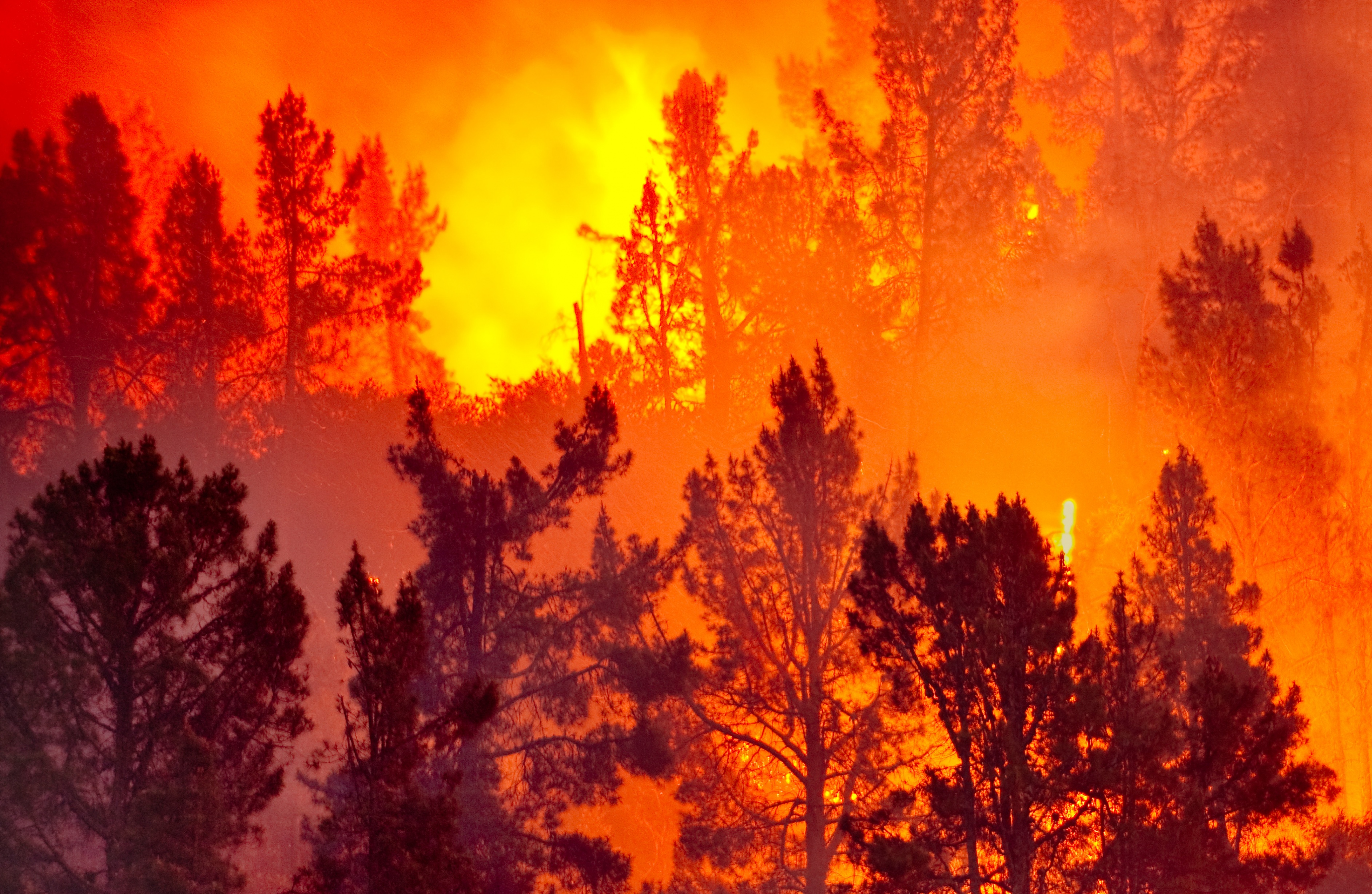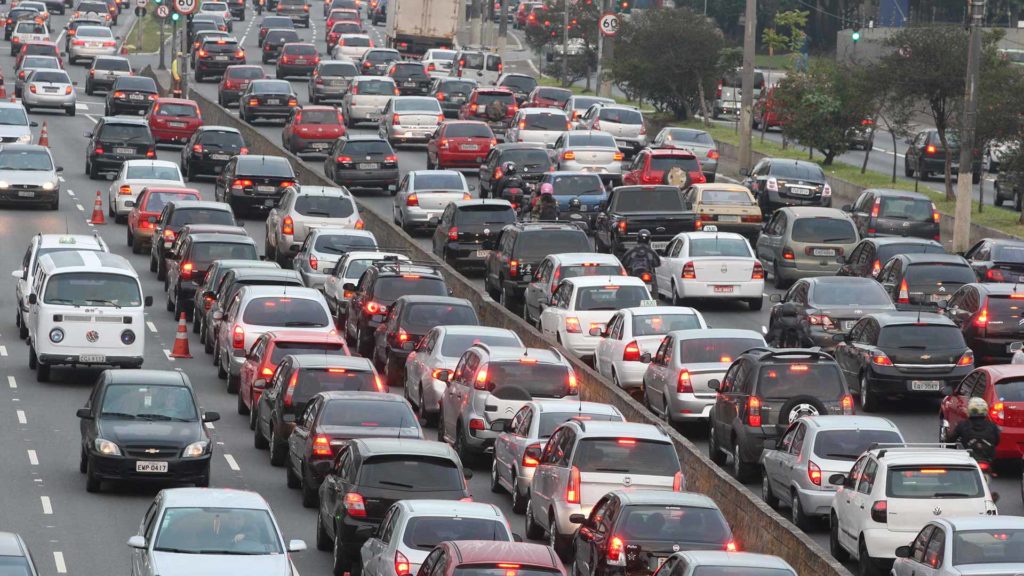
― Morris R. Gates
“The whole world was on fire.” These are the exact words of Brian R., a Magalia resident, who only minutes before his statement has experienced first-hand the horrors of Camp Fire, one of the deadliest and most extensive wildfires in Californian history. I can’t say for certain if it was Brian’s statement or the news reports that prompted me to write this article. Don’t even care, come to think of it.
Every prepper out there should know just how wild wildfire can get. And believe me, you haven’t seen anything yet. If you’re faint of heart, then you should quit while you still can. I have to warn you though that the article you see here before your very eyes will be pretty graphic and explicit. Be warned and welcome on board!
I can literally stay here an entire day and talk about the reasons behind wildfires. Some say that they are undeniable proof of climate change (nope, I ain’t going to touch that, not even with a ten-foot pole), while some cling to a more sordid theory – that each and every one of them is the work of guy or girl with too much time on his\her hands and too many matches. Can’t say for sure which one of them is more far-fetched. I’m going to go along with saying that wildfires are real and very deadly, at that. FIY, according to the guys over at the Insurance Information Institute, a staggering 90 percent of all wildfire are made by humans.
Pretty neat, isn’t it? What’s that got to say about forest fire prevention – in your face, Smokey! BTW, your hat is stupid. Anyway, wildfires tend to envelop entire acres of vegetation, which means that putting out the flames is a very difficult and time-consuming task. More than that, those toxic fumes are usually carried by strong winds, turning the entire area into a lung-killing trap. Wildfires closer to major cities like the 2018 Camp Fire can be far more dangerous compared to those limited to unsettled areas since most of injuries and deaths are not fire-related! Yes, you read that right.
Wildfires and natural disasters, in general, can make everyone lose their noggins. Think that this is something out of an Orwellian novel? Nope, it’s a fact. If the fire or smoke don’t kill you then maybe a crowd of scared-to-shit people will. And that’s another thing I want to address in this article. But more on that later. Remember – all good things come to those who wait!
It’s a wild world out there!

Back in ’16, Fort MacMurray in Canada had experienced the most devastating wildfires of the last two decades. I was back home that day, watching TV with my wife. There was this special bulletin on CNN saying that thousands of people were trying to get out of the city – some on foot, others by car, and there was even this young lady who got out of Dodge on horseback.
Anyway, the anchorman said that there was so much confusion going around that day, that entire family got separated just because they didn’t have any actionable means of staying in touch. As I later understood, the officials planned two separate evacuation routes – one was in the north of the city and the other one in the south.
The only thing was that the northern evac route was not designed to sustain that much outgoing traffic and people simply abandoned their cars and proceeded on foot. There was this one family who ended up in separate parts of the city because one member went to fetch the kids and took the northern route, while the other one returned home, and had taken the southern route, convinced that the other one made the same choice. Crazy, am I right?
The truth of the matter is that crazy doesn’t even begin to cover it when it comes to panic induced by natural disasters, not to mention the sheer stupidity which caused some of them in the first place. Ever heard about the catch-phrase “Like my fire”? If your first thoughts were “attention-seeker” and “social media”, then you’re right. Back in 2013, a teen by the name of Sadie Renee Johnson set a whole forest on fire just because she wanted to put to work two of her friends who happened to be firefighters.
Long story short, Sadie drove to one of the largest forest surrounding Portland and set fire to a firecracker. After the entire forest was on fire, the teen took a picture, posted it on social media with the message “Do you like my fire?” Her stunt led one hell of a wildfire, which burned down 51,000 acres and caused damages amounting to $8 million. You go, girl! The saddest part is that Johnson is not the only person to have caused a wildfire.
Getting back to the matter at hand, wildfires can be prevented. How you ask? By using a thing called common sense. Put out those fire pits before leaving the forest. Better yet, use a portable fire device like a Bunsen burner or something to cook your food or to get smoochy with that chick you picked up from Tinder. Also, if you’re a smoker, my advice for you would be to quit. Still, if you’re hiking in a heavily forested area, it would be a good idea to extinguish that butt with water, sand, gravel, dirt or anything. A portable ashtray would also be a major improvement.
Now, after getting these out of the way, let’s have a little chat about some of the things you could do in order to prevent a wildfire. While at it, I will share with you my kick-ass wildfire prevention evil scheme (insert Doctor Evil laughing with pinky in his mouth meme here).
Wildfire prepping and prevention
I’ll just say this once: if you’re in the city, you’re royally screwed. If you’re in the countryside, guess what? You’re also in danger! No matter where you go if the wildfire will eventually catch up to you.
Let’s talk a bit about a little thing called wildfire prevention. I’ve already given you one example. Putting out a fire pit is not only your way of saying “thanks” to the forest but the most efficient way of preventing a wildfire.
On that note, you should always keep a close watch on that fire, especially if you plan on spending the night in the forest or something. It’s always a good idea to keep a bucket of water or dirt or sand near the fire pit in case something goes wrong. You should also wall your fire (placing rocks around the fire pit) to prevent it from expanding. Simple and common-sense stuff.
Of course, I guess it would also help not to set fire to firecrackers by the side of the road so that your friends may have work cut out for them. Anyway, this just about covers the stuff you can do to prevent wildfires while you’re outdoors. Still, if you’re living off-grid, say a small hunting cabin, like yours truly right there, things get a little more complicated. See, when you’re smack in the middle of something that can at any time turn into a searing oven, your prepping must take on a more active role.
The idea of dropping off the grid is neat, and nothing beats that fresh mountain air in the morning. However, as I later came to find out, having such a place puts you a bit in harm’s way, wildfire-wise.
In respect to all you wonderful crazy guys and girls out there, I’ve whipped out a small to-do wildfire prevention and prepping checklist. I haven’t got around to solving all of them since I still have a 9-to-5 and this here editorial gig, but I’ll eventually come around to it. So, here’s what I was thinking about fireproofing an off-grid home.
- Keep cordwood and fuel as far away from home as possible. One spark and everything goes to shift (damned autocorrect). What I did was to bundle all my firewood and wheelbarrow them to a small outcrop, some hundred feet away from the house.
Would be neat if the place is upwind. If you’re Gung-Ho about fuel storage, you can always build a small shack for them. You can find everything you need for the job at your local hardware store (bought everything I need from Costco). If you have a gas-powered generator, store the canisters inside this shack, and always under lock and key.
- Trimming. Since I’m smack in the middle of the forest, obviously I need to do a little more pruning than usual. Great for the heart, but not that okay when you have other stuff to tend to. Anyway, take all the time to trim bushes, tall trees with low-lying branches, shrubs, and any kind of vegetation close to your house. See, when the wildfire hits, all of those things turn into fuel.
Spare yourself the trouble of racking and buy a leaf blower. They’re not that expensive. Start with the roof – see if there are branches hanging over it and use a hacksaw or gas chainsaw to cut them off. You may either dispose of this stuff or do I did – dry them up and turn them into fuel for your stoves, fire pits or whatever floats your boat. Having so much vegetation around spared me a lot of firewood money.
- Sprinkler system. Gotta make sure that sprinkler system is up and running. My advice to you would be to buy the non-automatic version and to outfit it with a mechanical timer – they’re far more reliant and endearing compared to their electronic peers.
Here’s what I did to make sure that my house doesn’t get scorched from a wildfire. I went ahead and installed two separated sprinkling systems – one for the lawn and one for the roof and the front side of the house. That way, if a wildfire sprouts nearby, I can use the system closer to my home to water down the roof and walls.
- Trash the trash. Get rid of another wildfire danger by burning your trash and burring the ash pile far from your house. I know it’s a thankless and smelly job, but, hey, it certainly beat the alternative. Sure, that doesn’t mean you can’t have some fun while doing it.
See, when I moved in with my wife and kids, I discovered I had this charming guy who claimed that the cabin is his and wants us off his property. After a couple of lovely chats with the local sheriff and idle threats, I managed to prove to him that the cabin was mine and mine alone. Still, he would hang around, waiting for a chance to call the cops on me for whatever reason.
So, this one night, me and a couple of buds, after drinking one too many suds, decided to pull a fast one of the peeping Tom. We grabbed all the garbage we could find around the house, placed inside one of those black, heavy-duty bags, and arrange everything so that it would look like a body bag with a corpse inside. And, while he was watching, we took out the faux body to the yard, lit up this big fire pit, and threw it over the flaming pile. From that day on, I haven’t seen him around.
So, this is the end of part one of my take on wildfires. Stay tuned for more misadventures from the prepping world. Stay frosty guys, and see you in part two of my wildfire series.




















